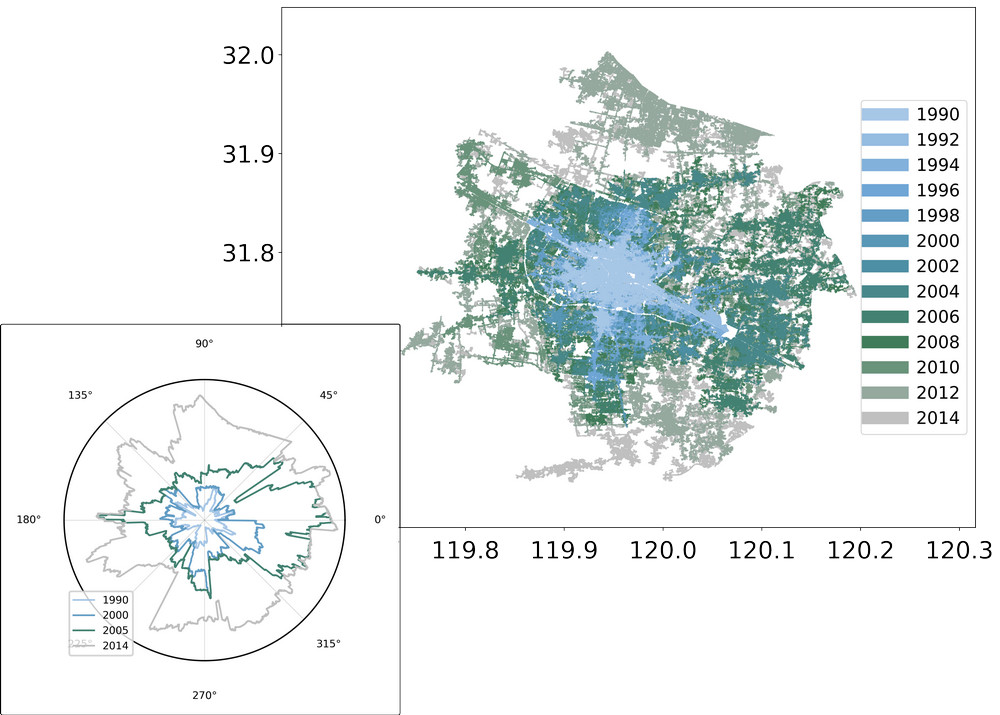Urban sprawl is reshaping cities, yet its quantitative laws remain difficult to pin down.
Marc Barthelemy (IPhT) and his colleagues have characterized the geometry and dynamics of the growing urban surface.
Cities are expanding all over the world, but the mechanisms governing this growth remain poorly understood.
In a recent study published in the prestigious journal Physical Review Letters [1], Marc Barthelemy, from the Institute of Theoretical Physics (CEA & CNRS) and the Center for Social Analysis and Mathematics (CNRS/EHESS), together with his colleagues from the University of Trento and the University of Barcelona, addressed this issue.

Example of isotropic growth (Changzhou, China). Insert: growth of the connected giant component.
Using satellite data to track the evolution of 19 cities between 1985 and 2015 and applying tools from physics—usually used to study surface growth or crystal formation—these researchers discovered that urban growth is not random. On the contrary, it follows clear patterns: cities tend to develop in uneven, branched forms, and there is a constant relationship between the built-up area and the population living there.
These results are important because urban sprawl influences all aspects of urban life, from transportation and housing to the environment. Understanding the hidden structure of city expansion can help urban planners, scientists, and policymakers make better decisions for the future of urban growth—and provides the empirical basis needed to build reliable models of city development.
[1] Ulysse Marquis, Oriol Artime, Riccardo Gallotti, and Marc Barthelemy. Universal roughness and the dynamics of urban expansion. Phys. Rev. Lett. 135, 187403. arXiv:2506.10656.


